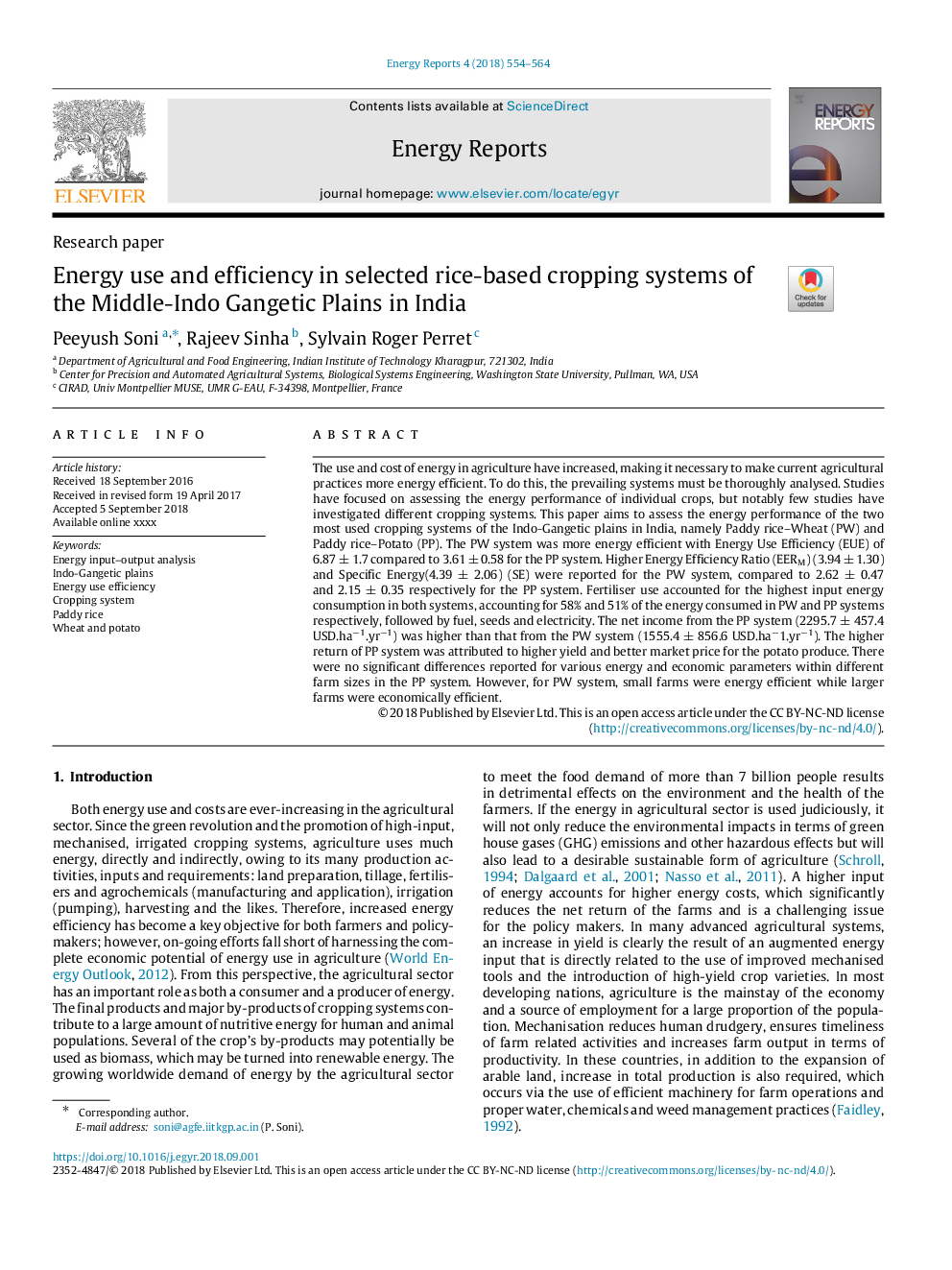| Article ID | Journal | Published Year | Pages | File Type |
|---|---|---|---|---|
| 11007400 | Energy Reports | 2018 | 11 Pages |
Abstract
The use and cost of energy in agriculture have increased, making it necessary to make current agricultural practices more energy efficient. To do this, the prevailing systems must be thoroughly analysed. Studies have focused on assessing the energy performance of individual crops, but notably few studies have investigated different cropping systems. This paper aims to assess the energy performance of the two most used cropping systems of the Indo-Gangetic plains in India, namely Paddy rice-Wheat (PW) and Paddy rice-Potato (PP). The PW system was more energy efficient with Energy Use Efficiency (EUE) of 6.87 ± 1.7 compared to 3.61 ± 0.58 for the PP system. Higher Energy Efficiency Ratio (EERM) (3.94 ± 1.30) and Specific Energy(4.39 ± 2.06) (SE) were reported for the PW system, compared to 2.62 ± 0.47 and 2.15 ± 0.35 respectively for the PP system. Fertiliser use accounted for the highest input energy consumption in both systems, accounting for 58% and 51% of the energy consumed in PW and PP systems respectively, followed by fuel, seeds and electricity. The net income from the PP system (2295.7 ± 457.4 USD.haâ1.yrâ1) was higher than that from the PW system (1555.4 ± 856.6 USD.haâ1.yrâ1). The higher return of PP system was attributed to higher yield and better market price for the potato produce. There were no significant differences reported for various energy and economic parameters within different farm sizes in the PP system. However, for PW system, small farms were energy efficient while larger farms were economically efficient.
Related Topics
Physical Sciences and Engineering
Energy
Energy Engineering and Power Technology
Authors
Peeyush Soni, Rajeev Sinha, Sylvain Roger Perret,
